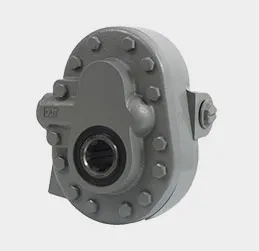Exploring Green Sand as an Effective Material for Metal Casting Applications
The Use of Green Sand for Metal Casting
Green sand is a traditional and widely-used mold material in the foundry industry, particularly for casting metal. This versatile medium is composed of a mixture of silica sand, clay, water, and various additives, which work together to create molds capable of withstanding the rigors of the metal casting process. The unique properties of green sand make it an ideal choice for numerous applications, from small-scale projects to large industrial operations.
One of the primary advantages of using green sand is its ability to provide excellent mold strength. The clay content in the mixture, typically bentonite, acts as a binding agent that holds the sand grains together, creating a durable mold that can withstand the pressure exerted during the pouring of molten metal. This strength is essential for producing intricate designs and complex shapes, allowing for a higher level of detail in the finished product.
The Use of Green Sand for Metal Casting
Additionally, the ability to reclaim and reuse green sand adds to its appeal. Foundries can efficiently recycle green sand by removing impurities and reintroducing it into the molding process. This not only reduces waste but also lowers production costs, making green sand casting an environmentally friendly and economically viable option.
green sand for casting metal

Another benefit of green sand is its ability to allow for quick setup and production. Unlike more complex molding techniques, such as lost-wax casting, green sand can be prepared and molded in a relatively short amount of time. This speed is particularly advantageous for foundries that need to meet tight production deadlines or for small-scale metalworking projects that require rapid prototyping.
The properties of green sand also contribute to its effectiveness in surface finish quality. When properly prepared, the sand grains create a smooth surface on the casted metal, reducing the need for extensive post-casting machining. This can save both time and money in the finishing process, enhancing overall efficiency.
However, using green sand is not without its challenges. Variations in moisture content can affect mold stability, leading to defects in the finished casting. Additionally, some foundries may encounter difficulties in achieving consistent mold strength and surface finish, necessitating close monitoring and adjustments throughout the molding process.
In recent years, innovations in molding technology have improved the performance of green sand. Additives that enhance binding properties and reduce moisture-related shortcomings have become more common, helping to address some of the traditional challenges associated with green sand casting. Furthermore, advancements in automated molding processes have streamlined the production cycle, making green sand an even more attractive option for both small and large scale foundries.
In conclusion, green sand remains a staple in the metal casting industry due to its unique combination of strength, versatility, and cost-effectiveness. With its ability to accommodate various metals and the potential for recycling, green sand casting is a sustainable choice for modern foundries. As technology continues to evolve, it is likely that the applications and benefits of green sand will only grow, solidifying its place as an essential material in metal casting for years to come.
-
Top Extras Casting Solutions Die Casting and Sand Casting Experts High-Quality Casting and Die Casting ServicesNewsJun.10,2025
-
Top SS Casting Manufacturer Aluminum Die Casting Manufacturer China Precision Die Casting Company SupplierNewsJun.10,2025
-
High-Quality Brass Casting Sand for Precision Sand Casting Brass at HomeNewsJun.10,2025
-
Affordable Aluminum Sand Casting Solutions Custom PartsNewsJun.09,2025
-
High-Quality China Sand Casting Services Cost-Effective & ReliableNewsJun.09,2025
-
Premium Hot Stamping Parts Durable Plastic Decor SolutionsNewsJun.09,2025















